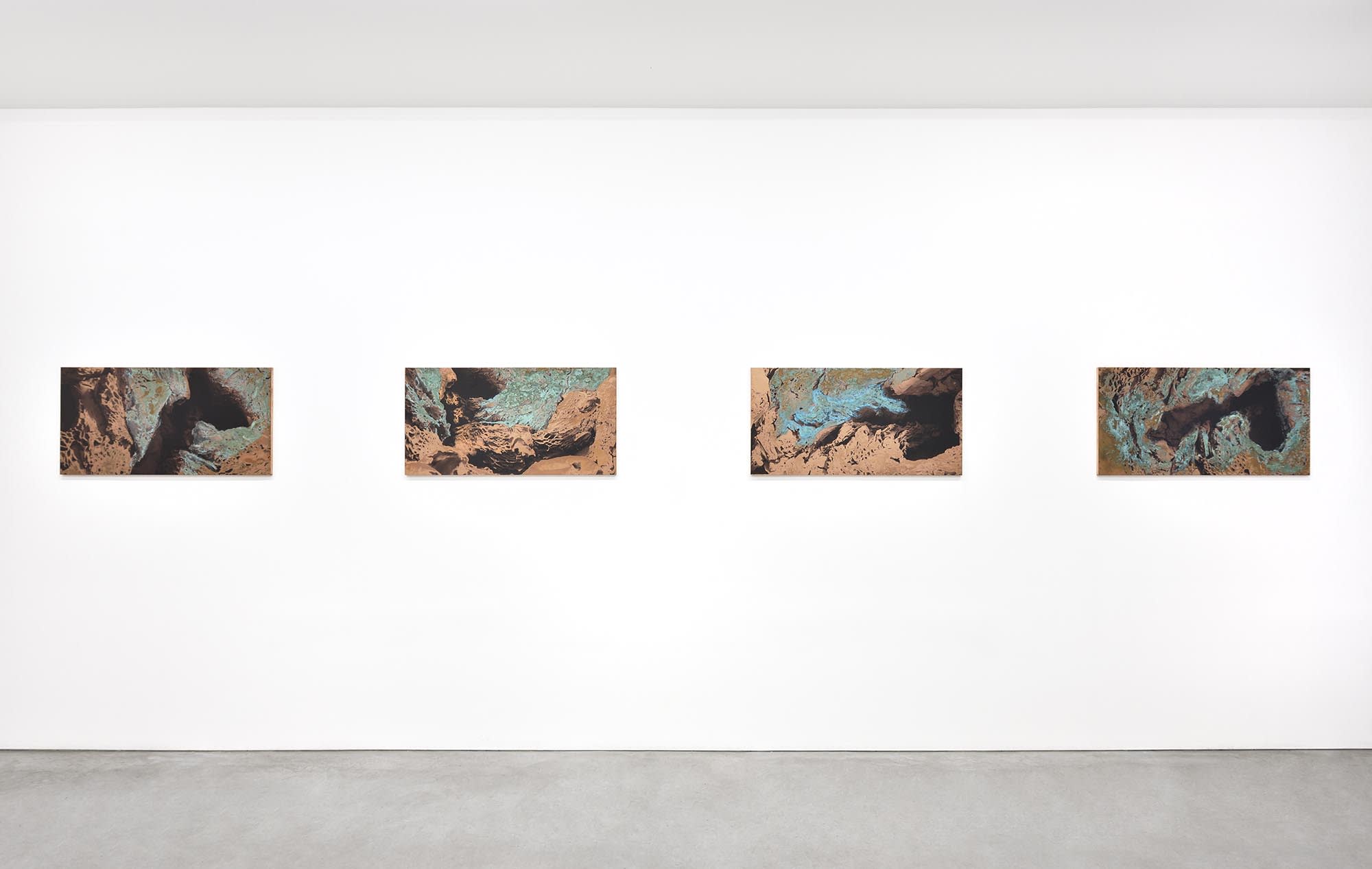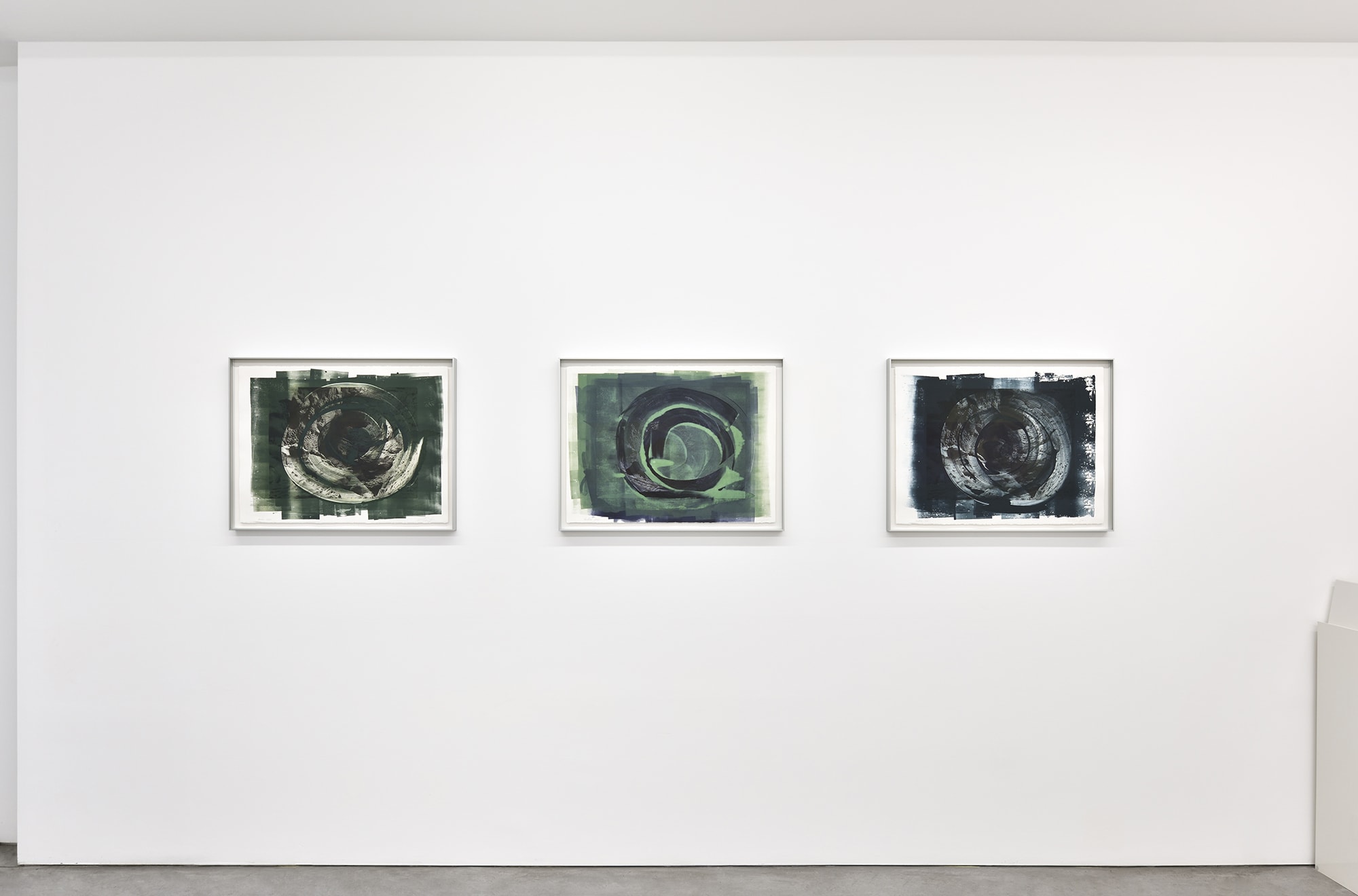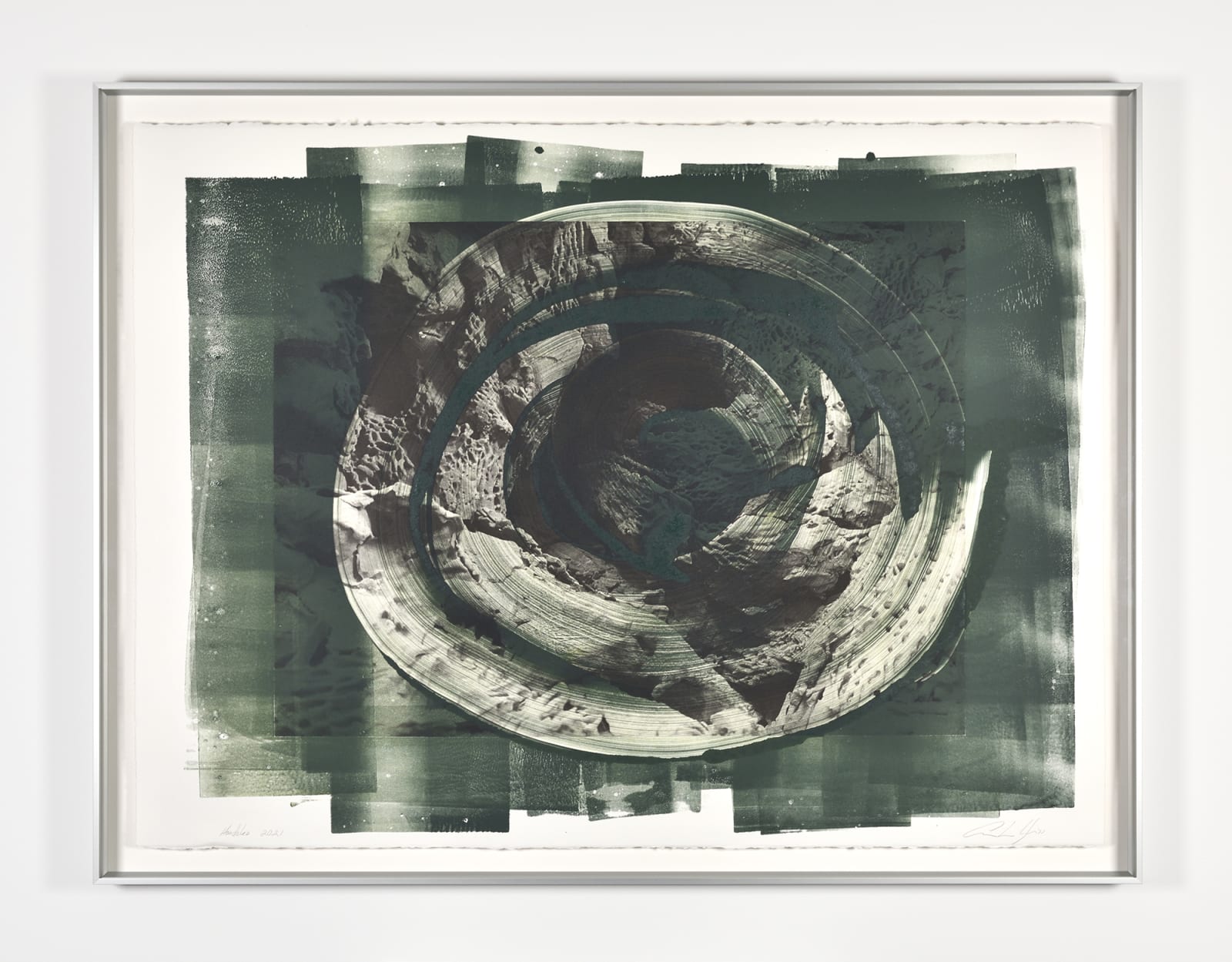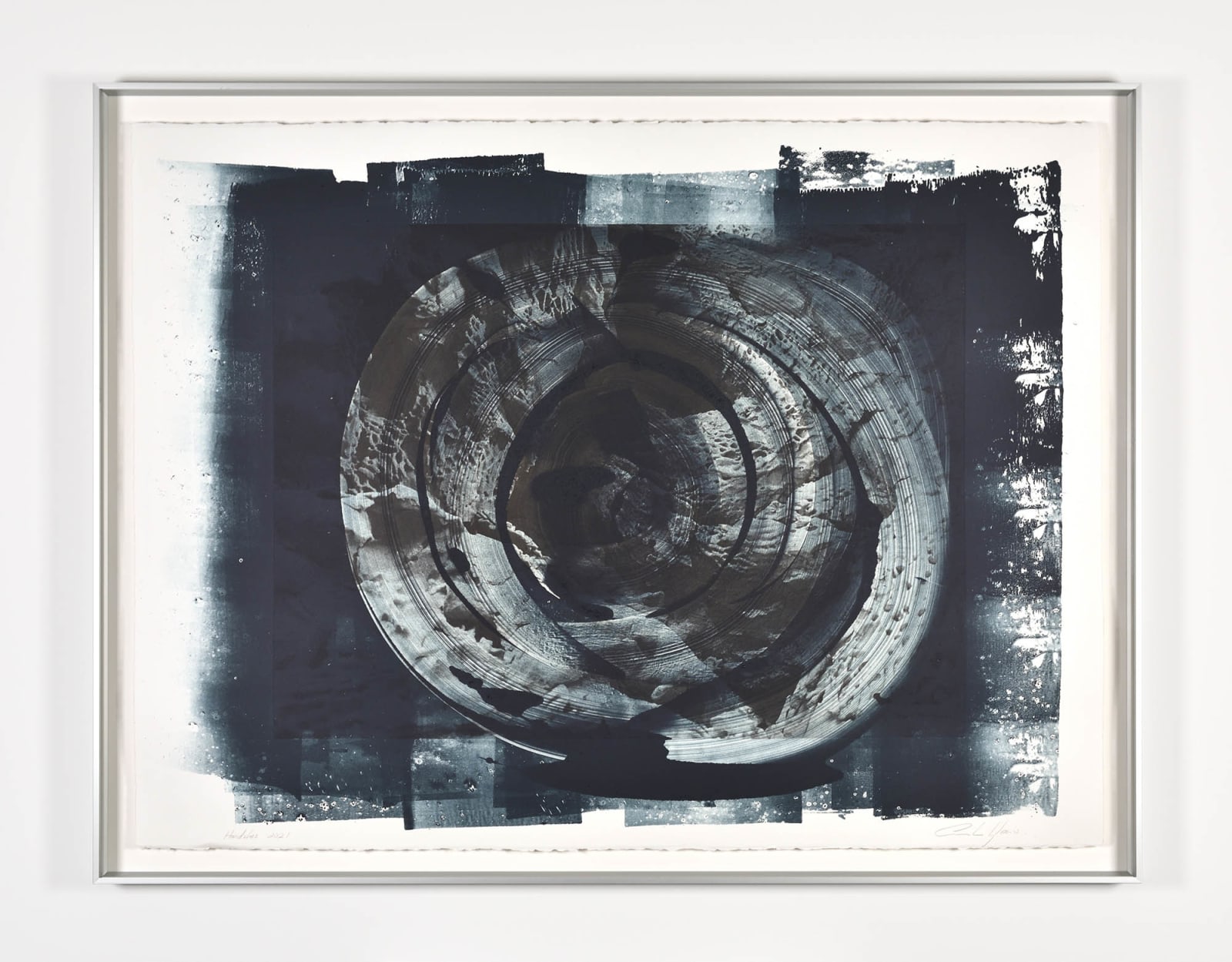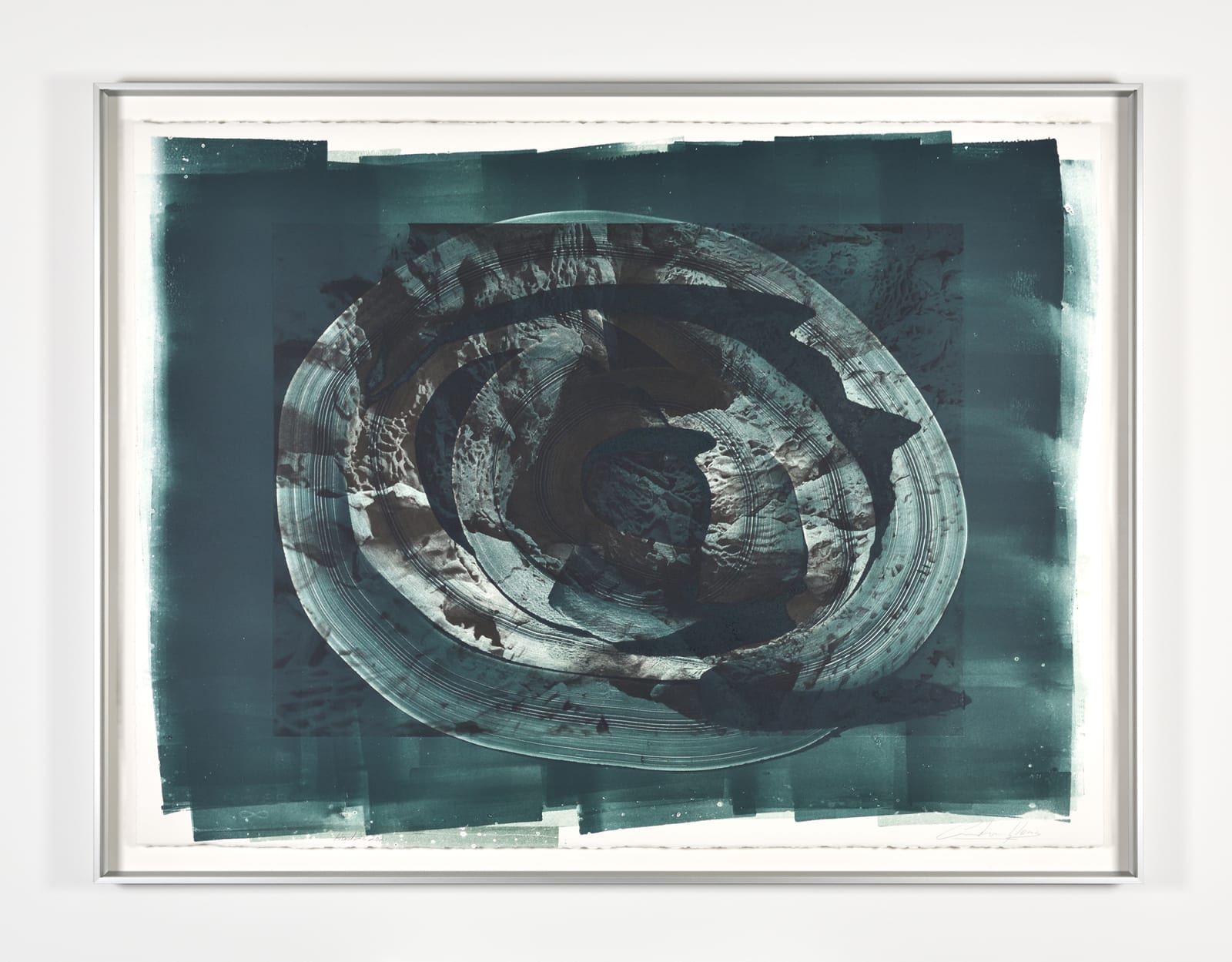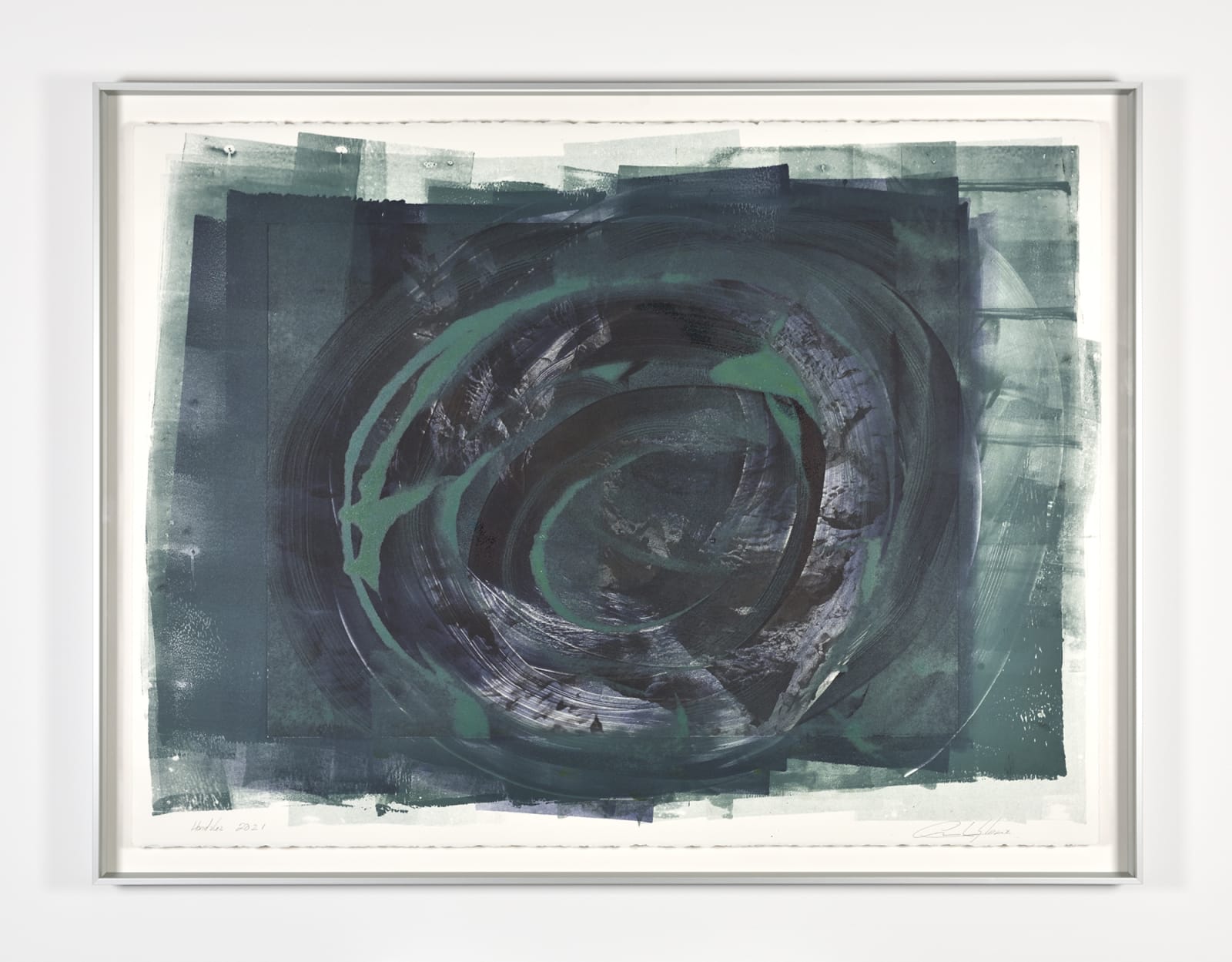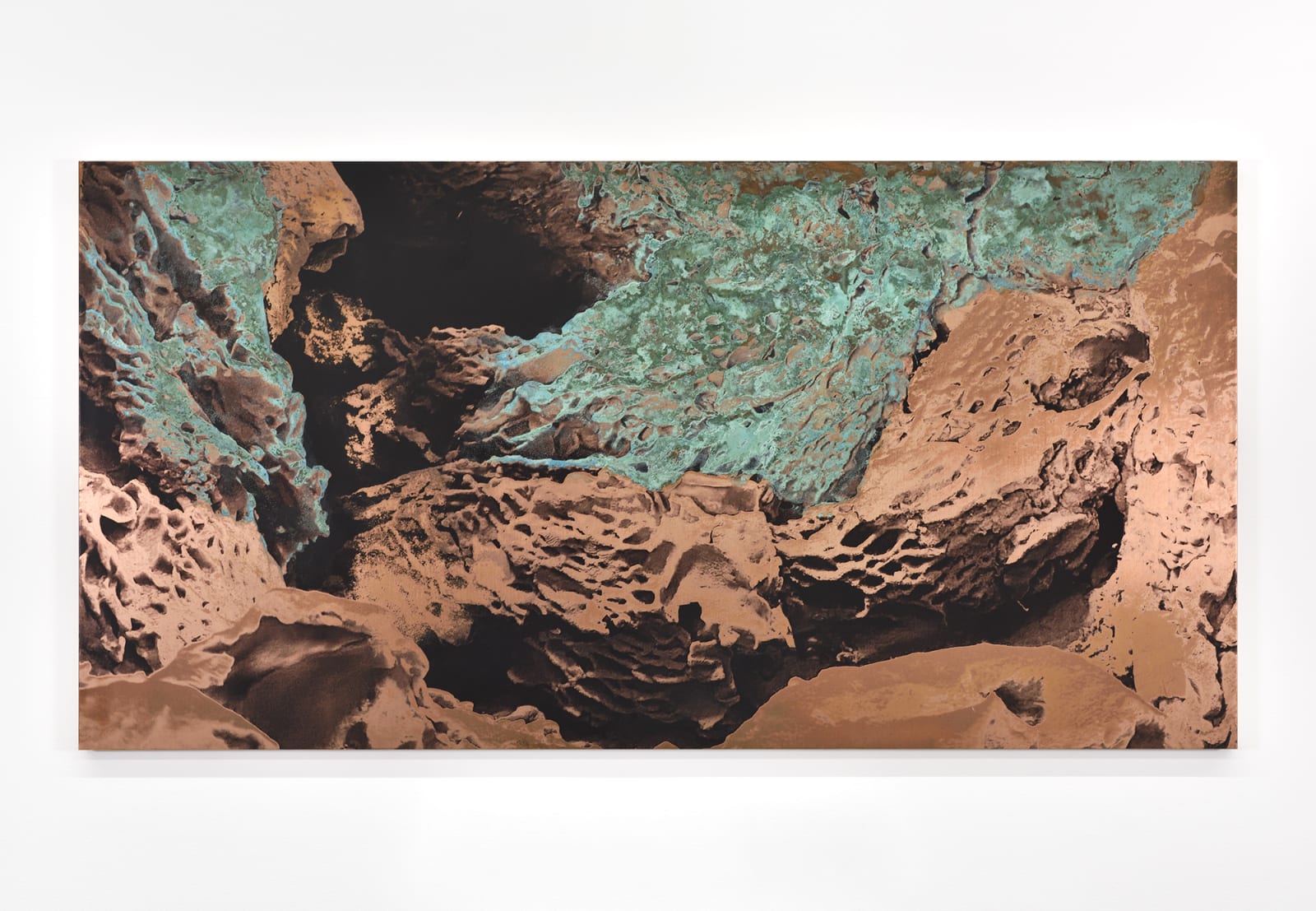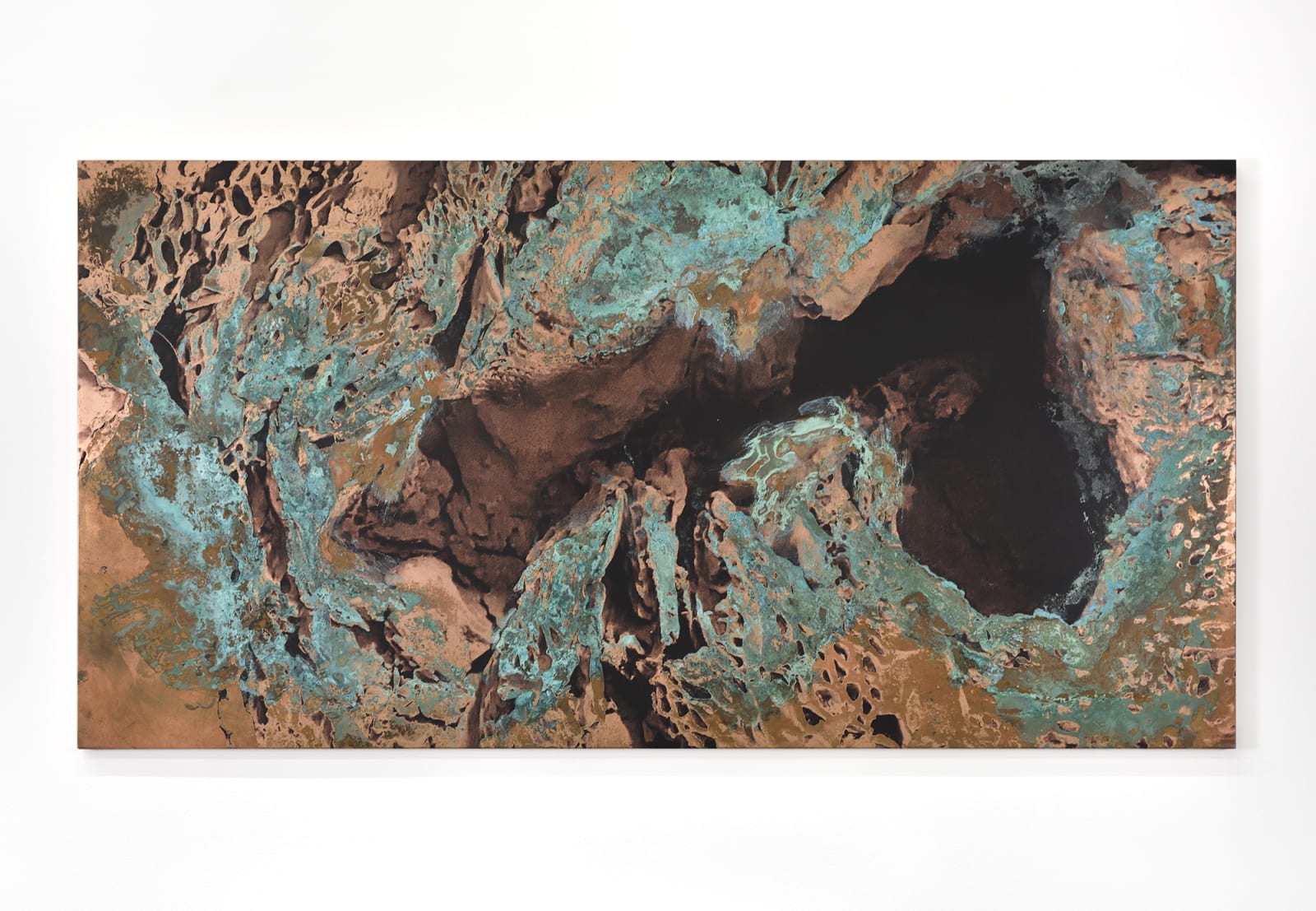Cristina Iglesias: Monotypes on Copper and Paper
Cristina Iglesias
Monotypes on Copper and Paper
Galerie Marian Goodman | 6 April – 13 May 2023
66 rue de Temple
Galerie Marian Goodman is pleased to present an exhibition of monotypes by Cristina Iglesias that uncovers the intricacies of her practice through the study of her sculptural works. The presentation includes a selection of works on copper and paper from the Cave Study (2022) and the Hondalea Study (2021) series, resulting from her 2021 Hondalea project. Hondalea is a unique sculptural intervention, located within an abandoned lighthouse, on a small Spanish island in the bay of Donostia / San Sebastián. The works show both real and envisioned views of Hondalea, which evoke the mysterious, cavernous nature of the thalassic world. At the opening on Thursday, April 6, Cristina Iglesias will sign the eponymous publication recently published by Hatje Cantz about this fascinating project.
Press Release | Checklist
Press Release | Checklist
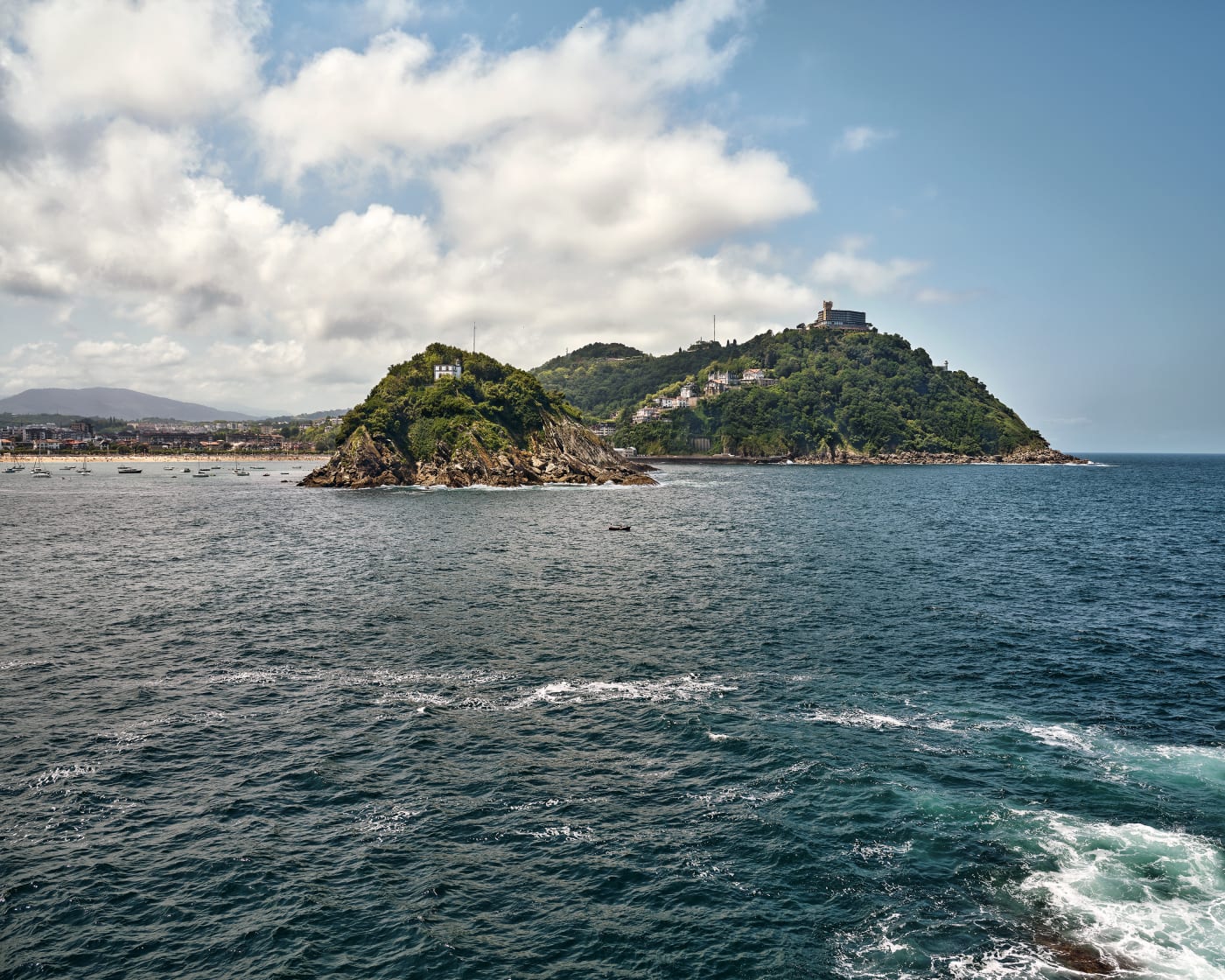
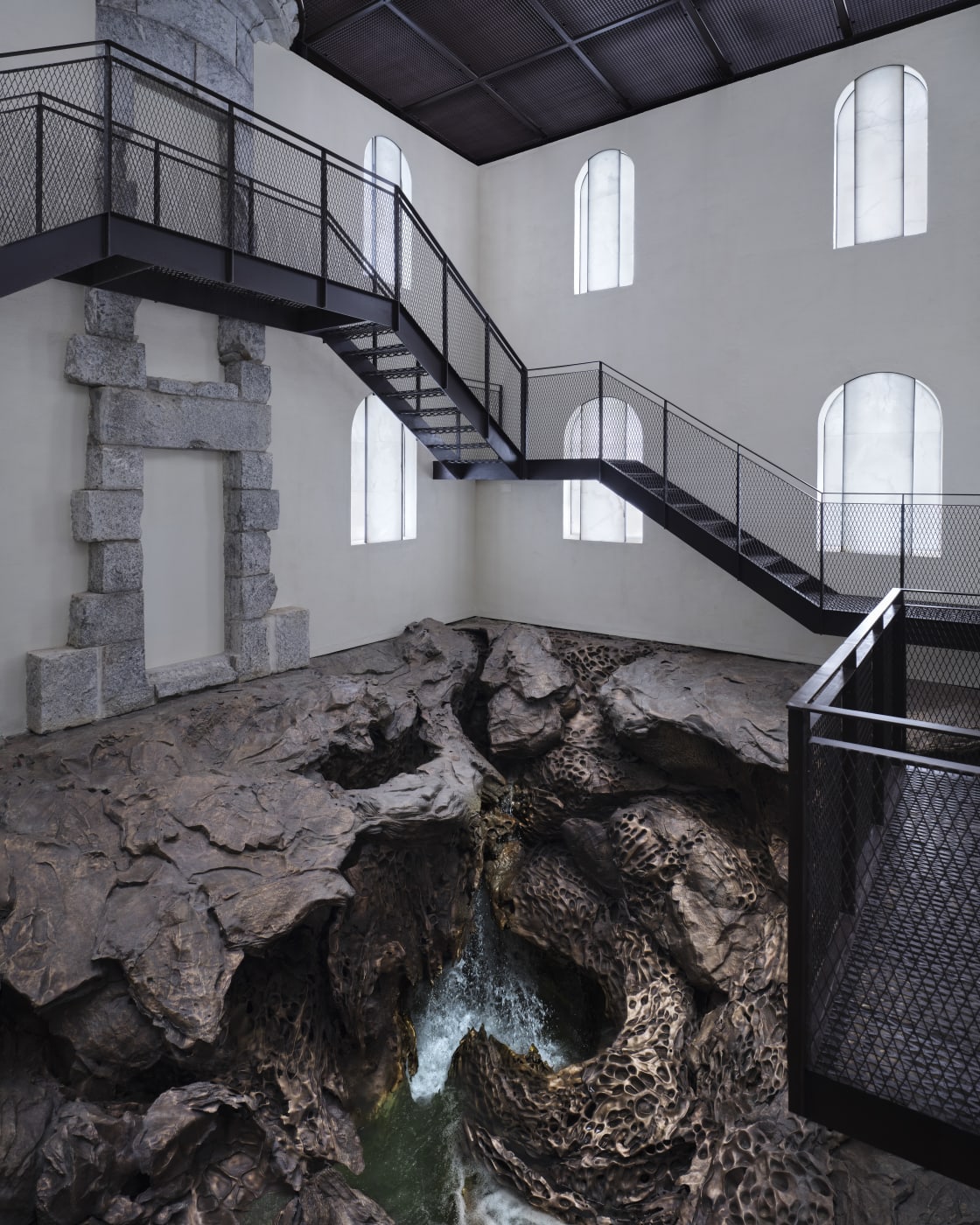
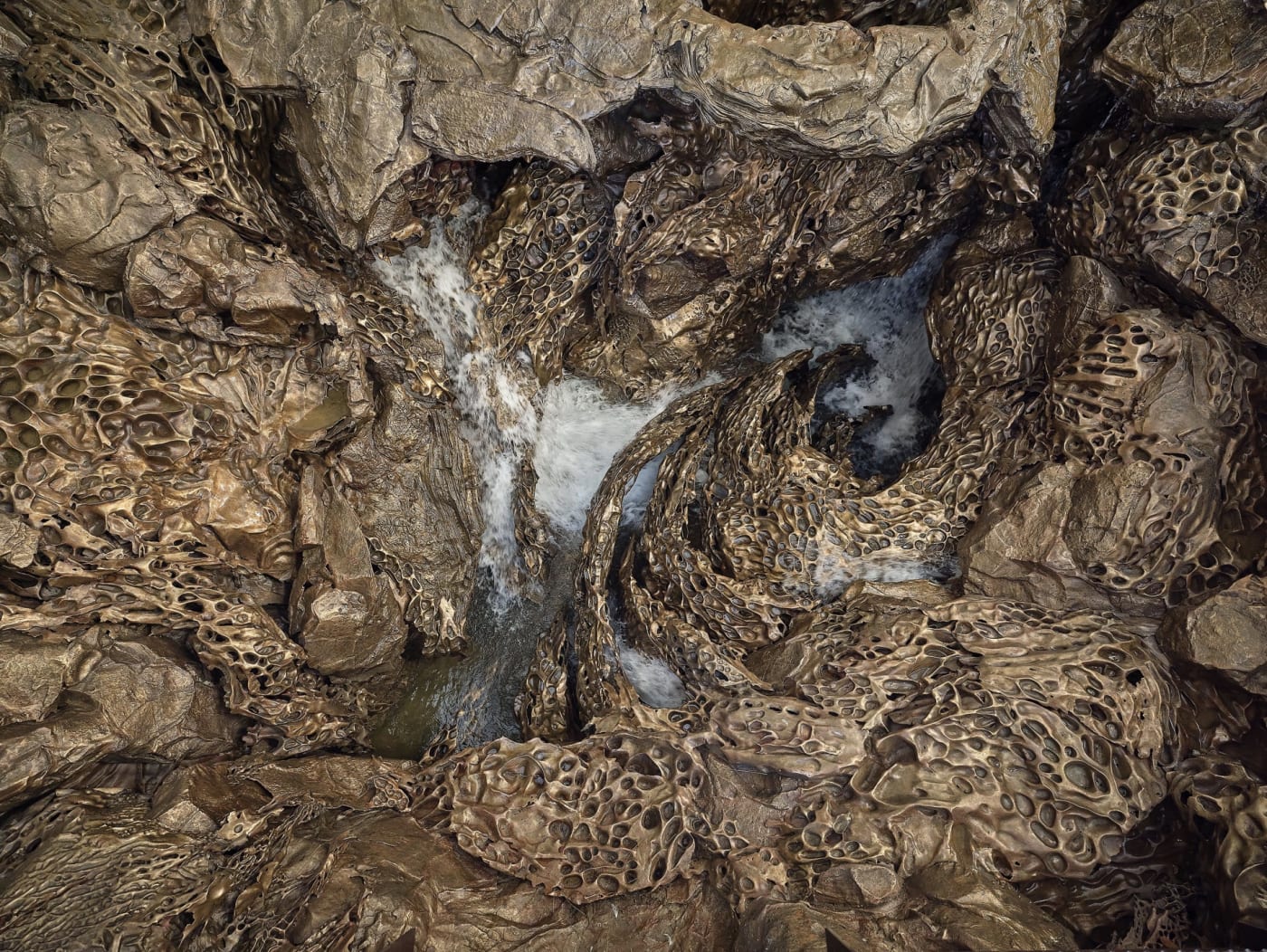
Hondalea is a permanent work created exclusively for the island of Santa Clara, accessible by boat from the port of San Sebastian, the artist's hometown. For Iglesias, the experience of the work is inseparable from the journey: “Since my childhood, the island has always been part of my imaginary world, signifying the distance from the city.” The sculpture, enclosed within the walls of the lighthouse building, is imperceptible from the outside. “As visitors travel to the island, the view remains unchanged. When they return to the city, they come back with a new memory of the place.”
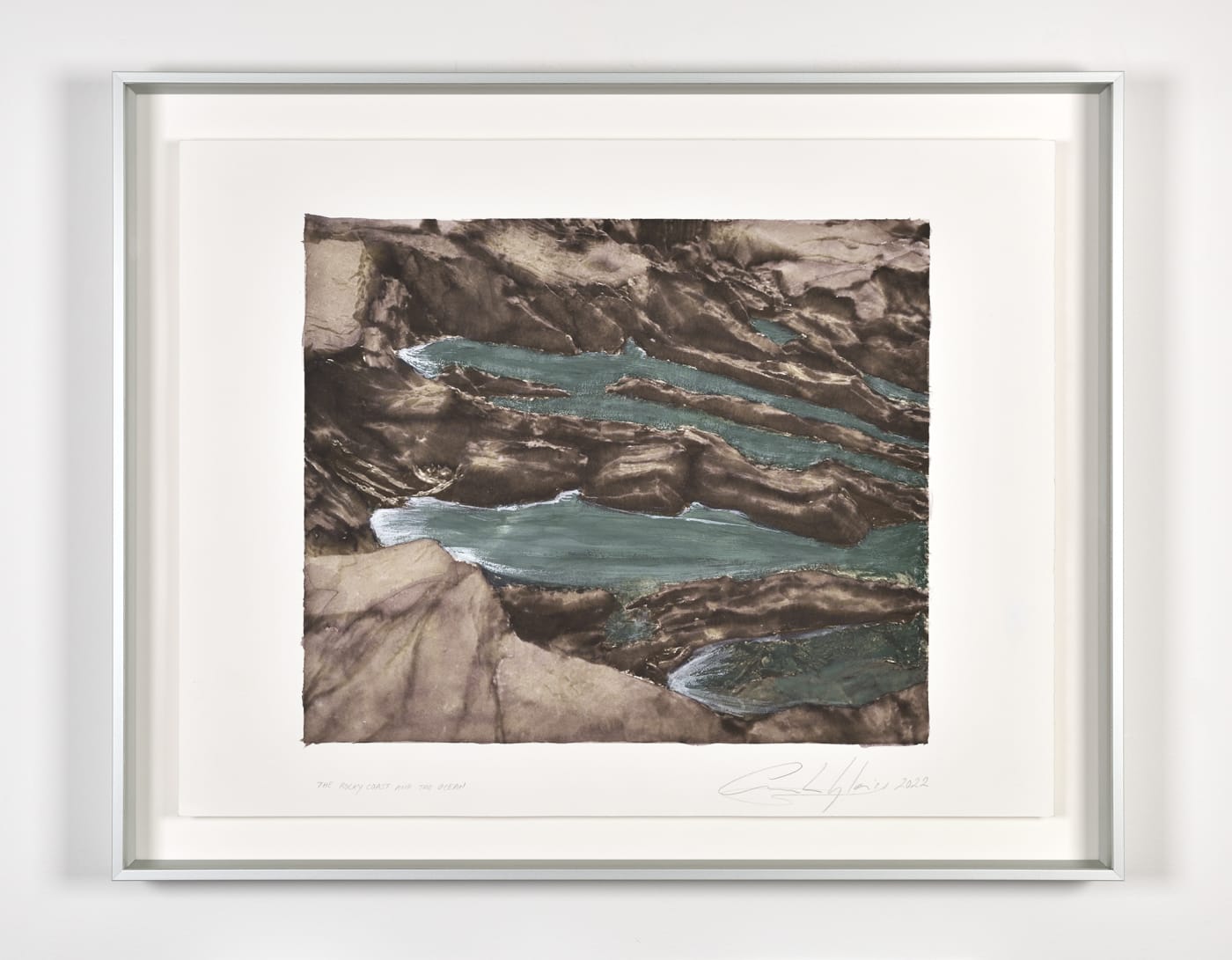
Cristina Iglesias
The Rocky Coast and the Ocean VI, 2022
Mixed media on paper
Paper: 12 1/4 x 15 3/4 in. (31 x 40 cm)
Frame: 14 1/8 x 17 3/4 in. (36 x 45 cm)
Frame: 14 1/8 x 17 3/4 in. (36 x 45 cm)

Cristina Iglesias
The Rocky Coast and the Ocean VII, 2022
Mixed media on paper
Paper: 12 1/4 x 15 3/4 in. (31 x 40 cm)
Frame: 14 1/8 x 17 3/4 in. (36 x 45 cm)
Frame: 14 1/8 x 17 3/4 in. (36 x 45 cm)
After restoring and excavating the interior space of a lighthouse house, Iglesias then embedded a sculptural seabed, composed of bronze casts directly inspired by the geology of the Basque coastline and in particular the flysch, the typical rock formations of the region. The work, conceived as a “fictitious storm” seeking “confrontation with nature, ” offers a sensory experience as the water rises from the depths and rushes into the cavities of the work. The alternating movement of the water, in turn violent and calm, acts as an active, seditious participant, as if the work itself was being battered by the waves. Here, Iglesias conjures a symbiosis between natural forms and pure imagination, between sculpture and architecture, between interior space and exterior environment which is characteristic of her sculptural language. The visualization of the abyss within the work revives buried memories and invokes a state of reverie.
Water is a constitutive element of Iglesias' work that is integrated into many of her sculptures. Through its flow, circulation, infiltrations, convolutions, or tumult - in the case of Hondalea - water brings a unique dramaturgy and a measure of time to her work. The monotypes presented at the gallery are dreamlike explorations of caves and the depths of the sea, where water is represented in acid or ink. The Cave Study series was made from a wax model of the monumental installation. Detailed photographs of this distilled version allowed Iglesias to create four series of six silkscreens on copper plates. She then acid-painted each plate, with the bite on the metal producing a green/blue coloration. For Hondalea Study the artist relied on the process of photoengraving, by painting on each plate a colored ink swirl in varying shades of green and blue: sky blue, Aegean blue, turquoise blue, sage green, seaweed green. Each monotype from each process is a unique work.
